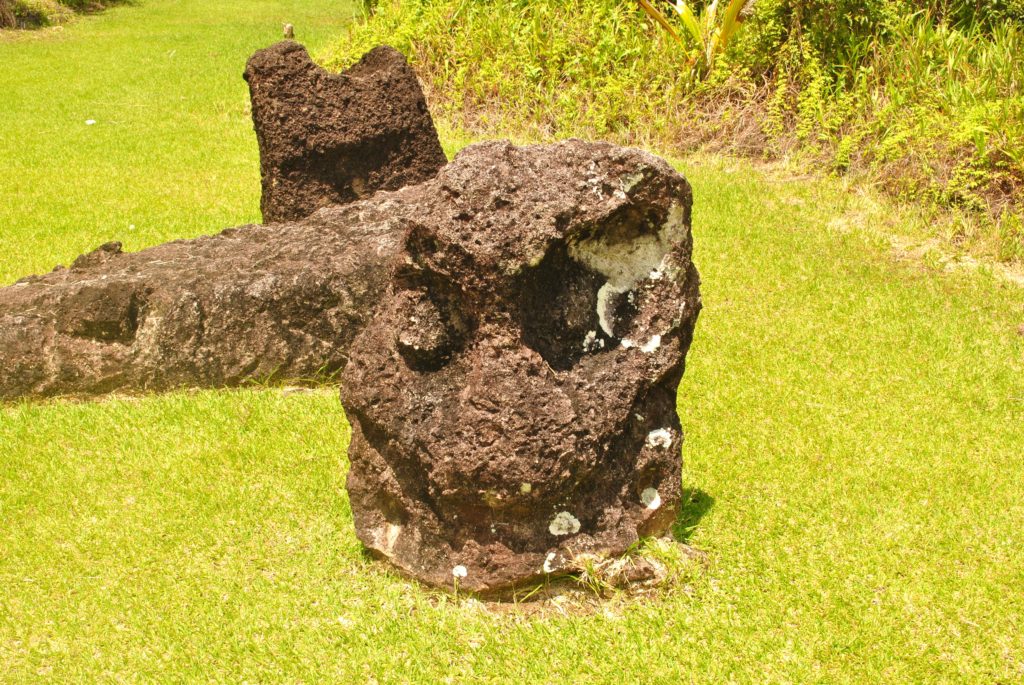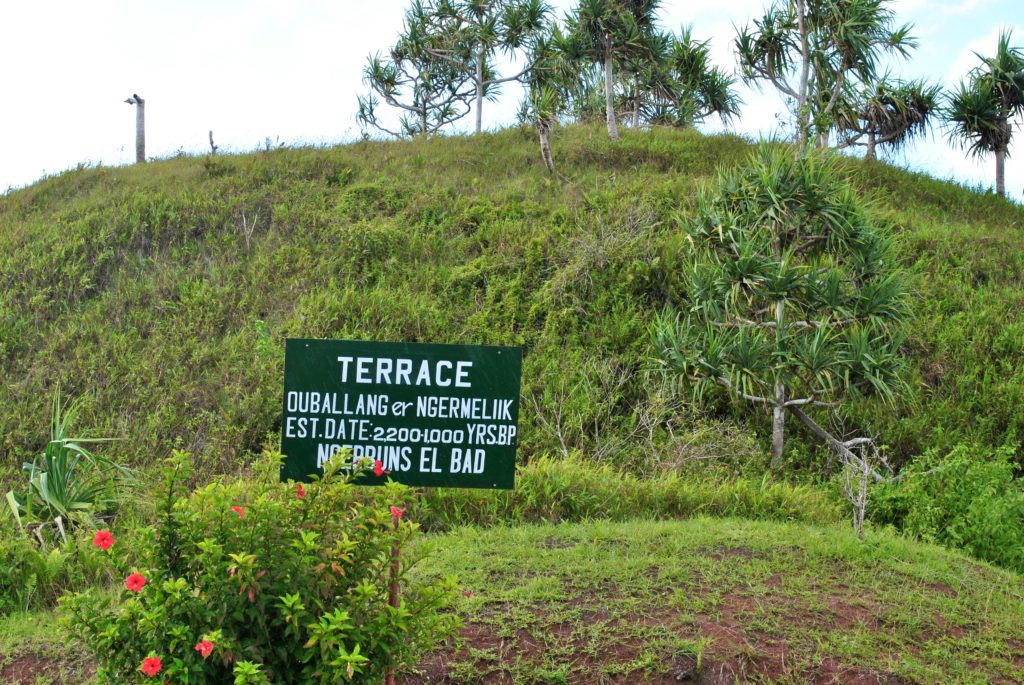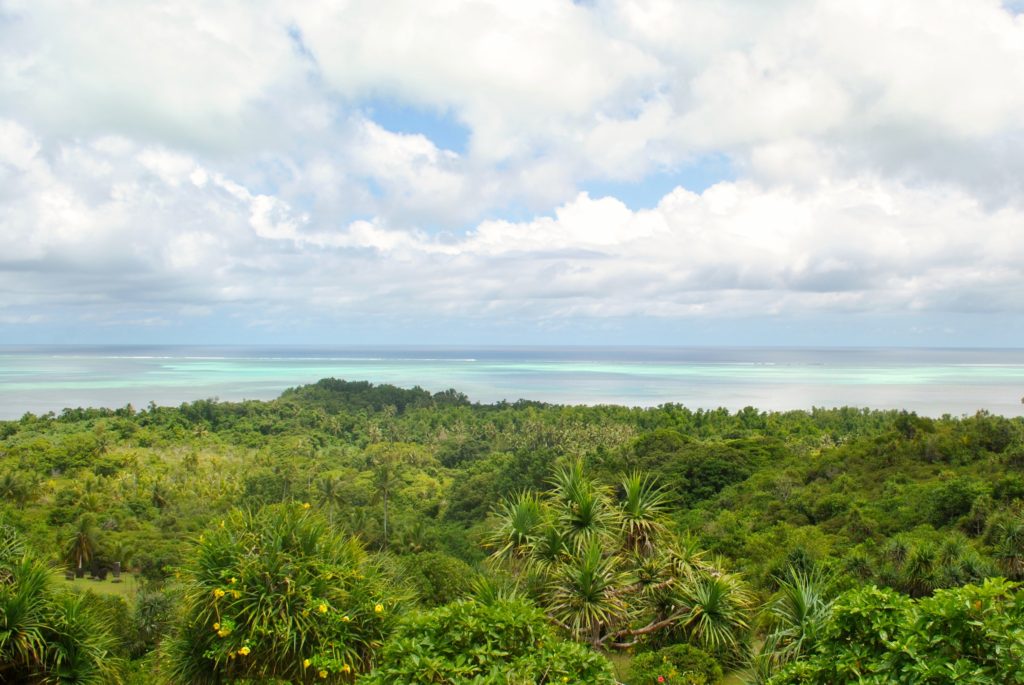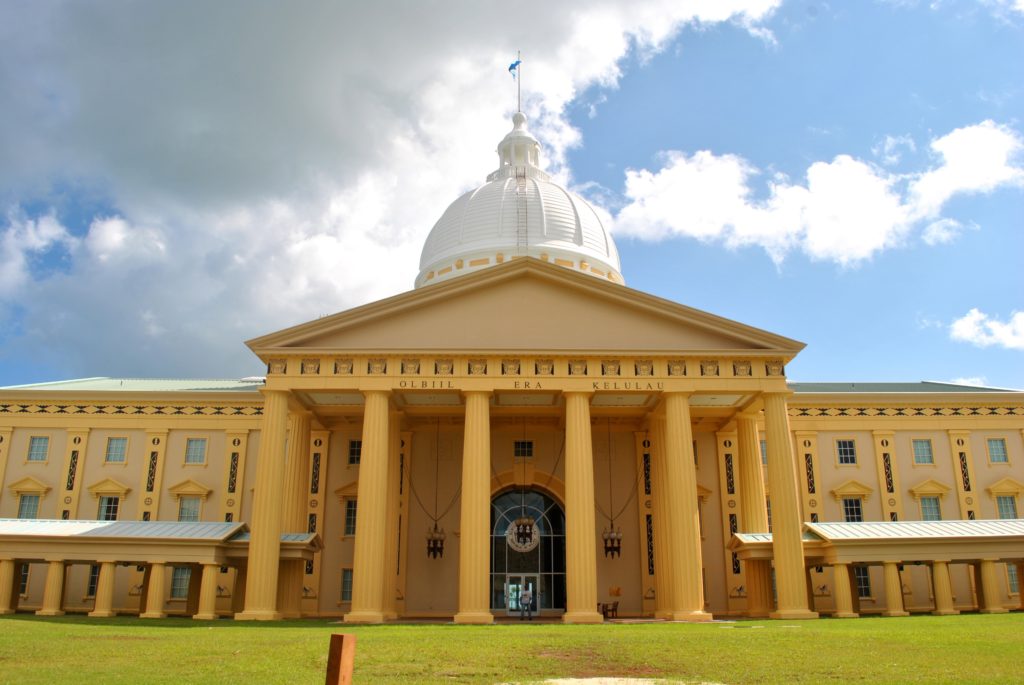Having two days in Koror waiting to get on our liveaboard we decided to rent a car and explore the big island of Babelboab. We used a local car rental info for which we got from the hotel (DW Motel). Conveniently car rental guys dropped and picked up the car from the hotel. We ended up with Nissan Cube – the only car available at the time – and first were skeptical but it did a good job including driving on gravel roads.
There is main excellent quality circumference road called Compact road in Babelboab connecting to Koror. Most tourist sites however are off this road and are only accessible by gravel roads. We got a map with all the sites from the hotel and generally were able to find our way quite easily. At first we thought the compact road was called so because it is a proper compacted road, but it turned out the name is derived from the Compact of Free Association – the agreement governing the relations between the U.S. and Palau ratified in 1994. The funding available under the Compact presumably paid for the road – hence the name.
To learn more about Palau and other islands in Micronesia history there is an informative documentary called History of Micronesia. Palau is believed to be first settled about 3,000 years ago. It was “discovered” by westerners in late 17th century. In 19th century Palau became part of Spanish East Indies, then after Spanish-American war it was sold to Germany, then in 1914 after WWI peace agreement control over the islands went to Japan. During WWII major battle was fought in Pelelliu between Japanese and U.S. forces. After the WWII Palau became part of Trust Territory of the Pacific Islands with administrative control of the US. In 1994 Palau became independent after ratification of the Compact of Free Association.
From the early historical period, there are terraces dating to more than a thousand years used for growing food (there is not much agriculture now in Palau and about 90% of food is imported). Badrulchau monoliths are large stone structures dated to 160 AD and located in the northern tip of the island offering spectacular ocean views.

Bai are traditional meeting houses where men would sit down to discuss matters of significance (and it seems party while at it). The houses are beautifully decorated by paintings depicting events of importance such as fishing expeditions, or fights between clans. At Ameliik Bai there was a guide/tourist officer/fee collector who gave us a tour of the Bai and shares the stories.
From Japanese and WWII period there are several destroyed buildings. The lighthouse/communication tower at the very northern tip of the island has the ruins and also offers a spectacular view. More WWII history is on Peleliu island. We did a land tour on Peleliu as part of our liveaboard trip offered by Aggressor. There is a good museum documenting the war and the battle on Peleliu and memorials, fortifications, tunnels, tanks and artillery scattered around the island. Peleliu is now a sleepy island with population of about 700 and no hotels or other tourist infrastructure. It is hard to believe that more that 20,000 troops were fighting there one day. Our local guide was explaining that people of Peleliu (who left for a neighboring island ahead of the battle) could not quite understand why did these foreign people come to their island to fight between themselves.
The most resent addition to Palau tourist attractions is the National Capitol building in Melekeok. There is apparently unsettled argument as to where exactly the capital of Palau is after the decision was made to move it from Koror. The huge capitol building reportedly costed a fortune (including borrowed money) and now appears not heavily used. Melekeok population is about 300 with most employees presumably commuting from Koror.
Of the natural attractions, aside from beaches and stunning views, there is a Ngatpang waterfall. There is a zipline over jungle which gets you about half way to the waterfall but we arrived late in the afternoon and it was closed for the day. Instead we hiked all the way to the waterfall – about an hour each way through the jungle. The hike is easy (we walked in flip-flops) and you pass an old rail line from Japanese times now covered by Jungle and have nice views of the waterfall and jungle from the hill before you descend. The waterfall is refreshing after a walk through steamy jungle. We were the only tourists around.
In our trips around Babelboab we did not see any restaurants and only a couple small convenience stores so it is best to bring along snacks and get a good breakfast in Koror. We liked Rock Island Cafe for generous breakfast. For dinner we headed to Drop Off Bar&Grill. They have excellent seafood and you can swap tories with other travelers and locals over a pint of Red Rooster (Palau’s own beer!). Crucially, Drop Off is located at/near the marina from which the liveaboards depart.
Travelled: Ocotober 2014.









